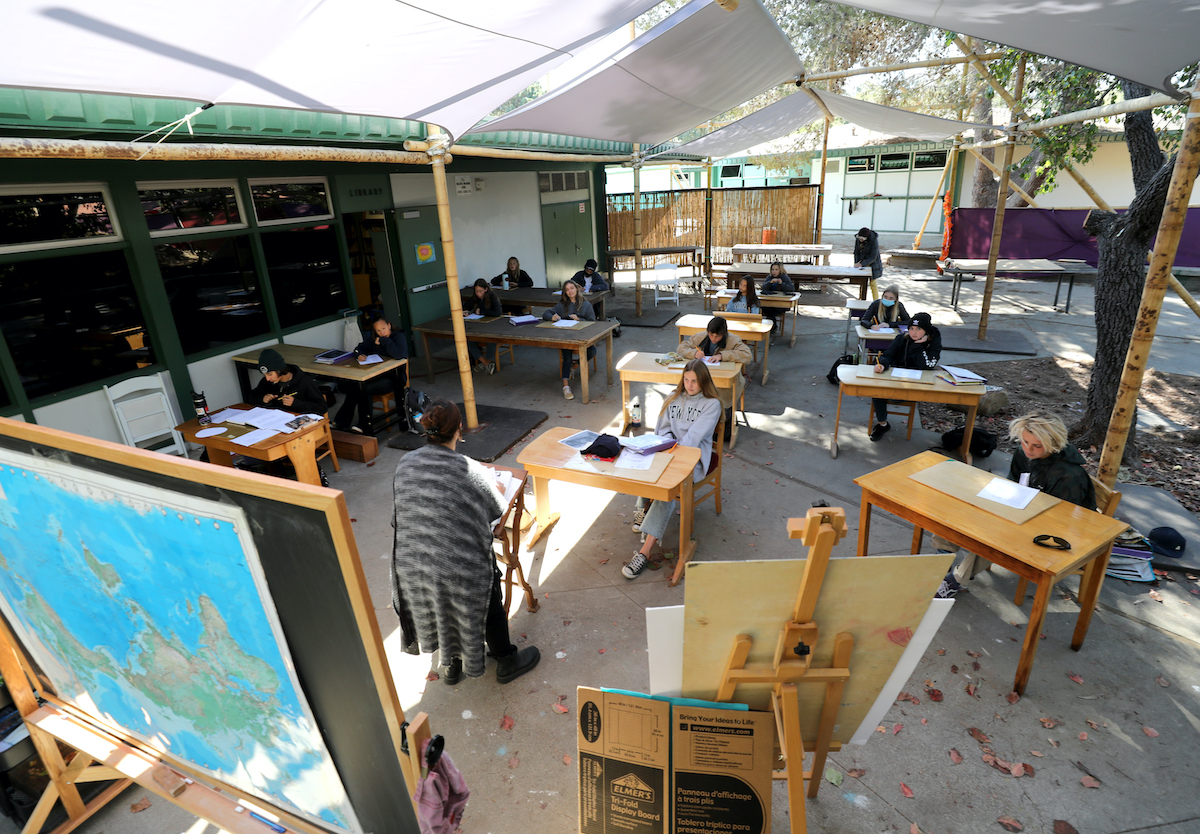FDA Okays Pfizer Vaccine for Children 12-15
Santa Barbara County Remains in Orange Tier

Vaccination efforts in Santa Barbara County continue to forge ahead as the Food and Drug Administration recently expanded its authorization of the Pfizer-BioNTech vaccine to include children ages 12 to 15.
“In anticipation, we have been planning for school-based clinics, and we are ready to implement them as soon as next week,” said Dr. Van Do-Reynoso, the director of County Public Health, in her presentation to the Board of Supervisors Tuesday. “Our public health vaccination team will be going to the schools to provide these school-based clinics.”
The rate of infection across the county is 3.5 per 100,000 residents, down from last week’s case rate of 4.6, and 62.1 percent of eligible individuals ages 16 or older have received at least one dose of a COVID vaccine, including those who received the single-dose Johnson & Johnson vaccine.
Network providers and public health clinics will receive 6,650 vaccine doses from the county this week with an additional 15,730 doses that had previously been ordered but not yet administered currently reserved in the county health-care system.
“There are no ICU patients due to COVID-19 as of yesterday, and we have not been here during the whole pandemic,” said Do-Reynoso. “This is the first time that we have zero COVID-19 ICU patients since we started tracking this information last April.”
Nonetheless, Santa Barbara County will remain in the orange tier, the second-to-least restrictive level, until the rate of infection is below 2 per 100,000 residents for at least two consecutive weeks.
Supervisor Joan Hartmann commended public health officials and health-care workers for all of their hard work in vaccinating the county, adding that the goal is to immunize at least 80 percent of the population.
“Our public health department is certainly doing its share, going to farmers’ markets and swap meets, but the government can only do so much. People really hear from their doctors and especially from other family members,” said Hartmann.
“I encourage family members to encourage other family members to get the vaccine, for your health and for your community,” she continued.
With the general consensus among public health experts being that most Americans who intend to get vaccinated have already done so, Supervisor Steve Lavagnino voiced his concerns about the government’s advocacy for individuals, even fully-immunized individuals, to still wear masks indoors as well as its potential repercussions in trying to convince constituents who are dubious of the vaccine’s efficacy.
“We still have to be cognizant of the fact that [COVID-19] exists, but at some point, we have to realize that we’re going to live with this virus for the rest of our lives,” said Lavagnino. “We were quick to implement the ordinances, and we have to be just as swift in removing them when they don’t make sense anymore.”
As the emergence of global COVID-19 variants could spell another deadly wave of infections, the Centers for Disease Control and Prevention continues to endorse the practice of mask-wearing until enough Americans are protected against the virus.
“I think we all want this chapter of our lives to be over, and the way we’re going to get there before we have to face other factors that could increase transmission is to achieve herd immunity as quickly as possible,” said Supervisor Das Williams.

Variants are making herd immunity something of a moving target. Santa Barbara counted its first two cases of the P.1 variant from Brazil in mid-April, a mutation that is responsible for the devastating surge of coronavirus in Brazil for the past several months. The P.1 was first identified in the U.S. in late January, said Dr. Lynn Fitzgibbons, an infectious disease specialist at Cottage and part of the Local Variant Research collaboration between UC Santa Barbara, Cottage Health, and County Public Health. The more-contagious variant has been more prevalent in the U.S. for several weeks; in California, it was found to be 10 percent of the samples genetically sequenced recently, adding to concern about decreased vaccine effectiveness. Several monoclonal antibody treatments have proved ineffective against P.1, as well, said Dr. Fitzgibbons; they’d been an effective tool in the toolkit against early stages of disease.
Just as P.1 descended from the widespread U.K. variant, another offshoot of the U.K.’s B.1.1.7 mutation is responsible for India’s escalating rate of disease and death. The Indian variant, the B.1.617.2, was ranked a variant of concern — the most worrisome level — by the U.K. and the World Health Organization last week, Dr. Fitzgibbons noted. Only a small number of the variant has been found in California, “but this is an important variant to watch for in the weeks and months ahead,” she said.
With additional reporting by Jean Yamamura.
Support the Santa Barbara Independent through a long-term or a single contribution.



You must be logged in to post a comment.